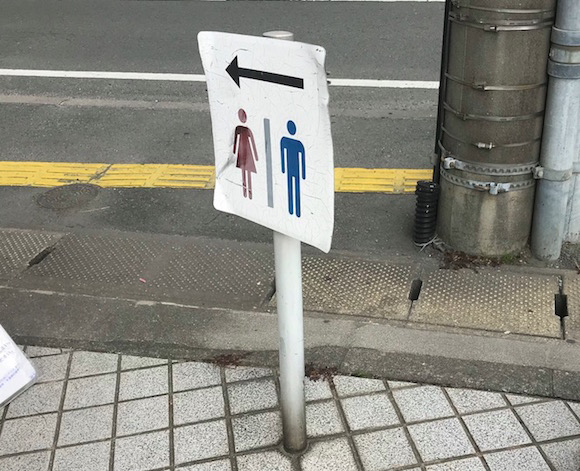
We’re equal parts intrigued and scared as we try this local version of Japan’s favorite noodle dish.
Part of the reason Japan has so many ramen restaurants is because the country has so many different kinds of ramen. The primary way to classify ramen is by the broth, and in addition to soy broth ramen restaurants you can find eateries that specialize in miso, tonkotsu (pork stock), and gyokai (fish stock) ramen.
Sometimes those classes even have their own subcategories. For example, in Fukuoka Prefecture tonkotsu broth is the most prevalent, but individual communities further put their own spin on the dish, which brings us to the town of Omuta, at the south tip of the prefecture, where the locals enjoy something that’s earned the nickname “benjo ramen,” benjo being a coarse Japanese word for “bathroom,” sort of like “the John” or “the head” in English.
The name might have you thinking benjo ramen was developed by convicts who made ramen in their prison cells, or perhaps secretly by people in their homes during some sort of ramen prohibition. The truth, though, is that benjo ramen traces its roots to Omuta’s coal mining boom following the end of World War II. In 1949, a group of four men from Okayama Prefecture came to Omuta and opened a ramen stand next to the town’s main train station. The stand quickly became a popular place for hungry miners to grab a meal, and its legacy is carried on today by the restaurant Kokaen, which makes the same style of ramen and, we’d been told by locals, is the place to go for benjo ramen.
We walked through the door, sat down, and looked at the menu, which simply lists the house noodles as “ramen,” with no “benjo” qualifier. At just 500 yen (US$4.50) it’s pretty cheap for restaurant ramen, although the order of gyoza (pot stickers) we added was also 500 yen, which is surprisingly expensive for the ordinarily inexpensive ramen accompanying side dish.
After a short wait, the waiter set our bowl of “benjo ramen” down in front of us.
As with most ramen in Fukuoka, Kokaen’s ramen has tonkotsu broth. But while tonkotsu broth is often a light tan, or almost milky white color, Kokaen’s, though, is a murky, opaque brown that’s not too far from being gray. It’s also pretty pungent, with an oily aroma, and bubbles of grease on the surface.
But while it might look and smell a little odd, the broth tastes great. As you might expect from a dish originally designed to satisfy off-duty coal miners, it’s incredibly flavorful, with a meaty saltiness. The gyoza reflect a similar philosophy, being packed with so much garlic we’d recommend thinking twice about ordering them if you’re going to be having an important business meeting or hot date following your meal.
▼ 10 gyoza to an order is a lot more than the six that’s the standard at ramen restaurants in Japan, which explains the 500-yen price.
But we still couldn’t understand why Kokaen’s ramen is called “benjo ramen.” Like we said, the menu didn’t offer any hints, and we felt too awkward to ask the staff directly. So we finished our noodles, paid the bill, and walked out of the restaurant, which is when things suddenly became clear.
At the end of the building Kokaen is located in, there’s a public restroom. Because of this, locals have largely stopped referring to the restaurant by its name, and instead just started calling it “benjo yoko ramen,” or “the ramen restaurant next to the restroom.” Eventually, that got shortened down to just “benjo ramen,” and nowadays there are even plenty of taxi drivers in the town who won’t know where you’re talking about if you ask them to drive you to “Kokaen,” but who know exactly where you want to go if you ask for “benjo ramen.”
So don’t fear, there aren’t any public restroom-sourced ingredients going into your benjo ramen (unlike the coffee at that one shady Starbucks in Hong Kong). Really, the bigger thing to worry about is having enough breath mints on you if you do decide to order the gyoza. And if you’re eager to try benjo ramen but want to balance its slightly vulgar name with some classiness elsewhere, you can always ride the fancy new luxury train that goes to Omuta.
Restaurant information
Kokaen / 光華園
Address: Fukuoka-ken, Omuta-shi, Higashi Shinmachi 1-5-15
福岡県大牟田市東新町1−5−15
Open 11 a.m.-12:30 a.m.
Closed Mondays (or Tuesday if Monday is a holiday)
Photos ©SoraNews24
[ Read in Japanese ]

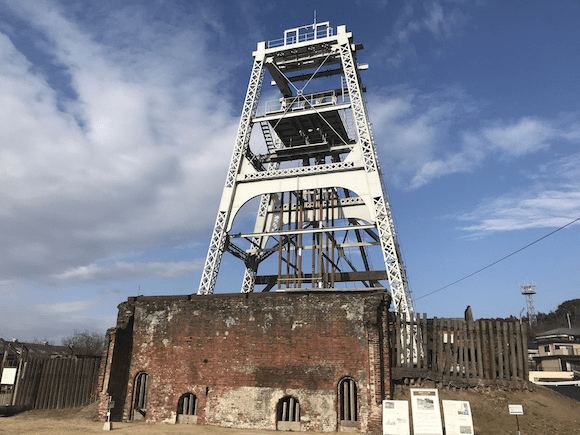
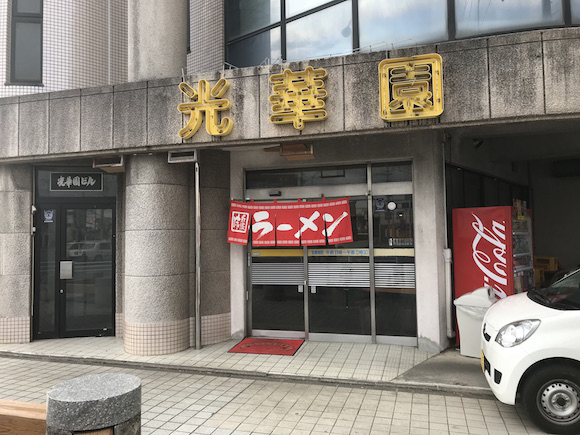
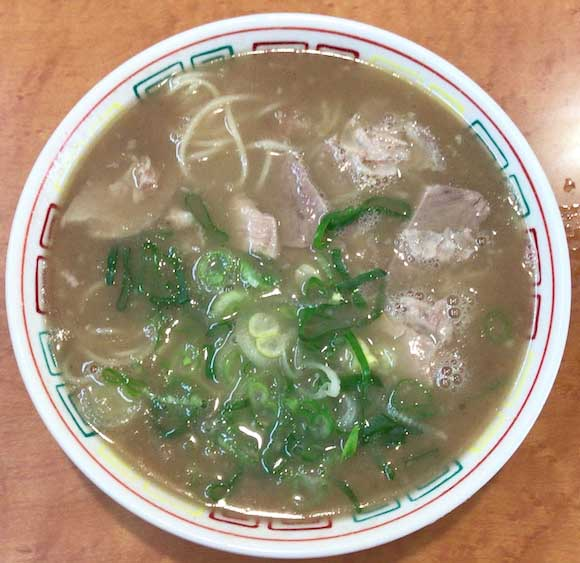
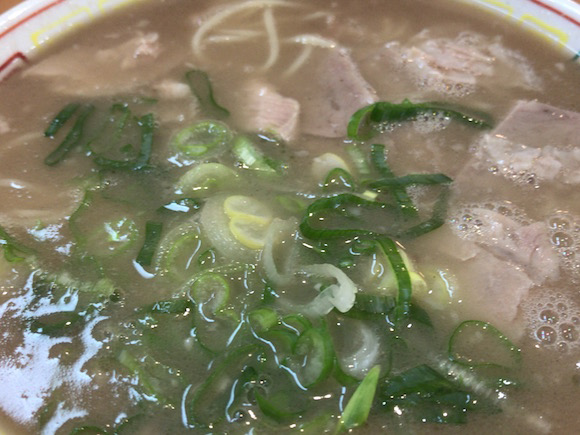
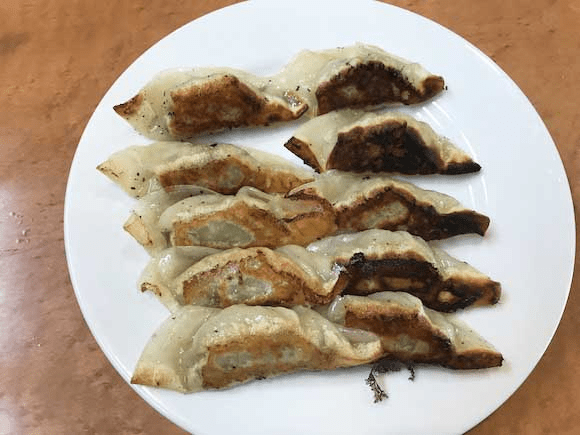
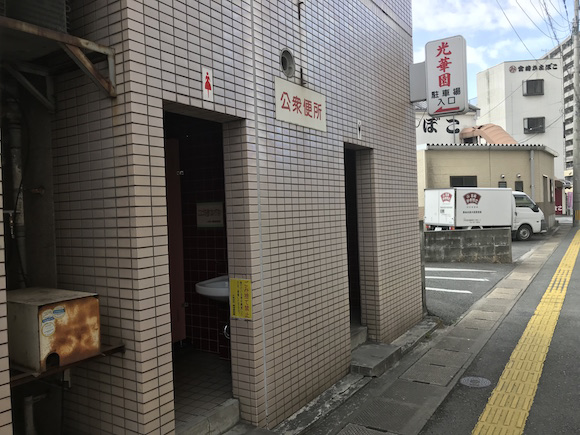
 We found a popular Japanese ramen chain in South Korea!…or so we thought
We found a popular Japanese ramen chain in South Korea!…or so we thought Is ramen pizza just crazy enough to work? Japanese restaurant’s unusual menu lets us find out
Is ramen pizza just crazy enough to work? Japanese restaurant’s unusual menu lets us find out Gyoza ramen! Two of Japan’s best comfort foods in one bowl at innovative restaurant【Taste test】
Gyoza ramen! Two of Japan’s best comfort foods in one bowl at innovative restaurant【Taste test】 The twin joys and dual sadnesses of eating ramen in the U.S.
The twin joys and dual sadnesses of eating ramen in the U.S. This London ramen restaurant’s super-strange ramen shocks our Japanese taste-tester
This London ramen restaurant’s super-strange ramen shocks our Japanese taste-tester Foreigner’s request for help in Tokyo makes us sad for the state of society
Foreigner’s request for help in Tokyo makes us sad for the state of society Red light district sushi restaurant in Tokyo shows us just how wrong we were about it
Red light district sushi restaurant in Tokyo shows us just how wrong we were about it Japanese city loses residents’ personal data, which was on paper being transported on a windy day
Japanese city loses residents’ personal data, which was on paper being transported on a windy day Historical figures get manga makeovers from artists of Spy x Family, My Hero Academia and more
Historical figures get manga makeovers from artists of Spy x Family, My Hero Academia and more Japan’s massive matcha parfait weighs 6 kilos, contains hidden surprises for anyone who eats it
Japan’s massive matcha parfait weighs 6 kilos, contains hidden surprises for anyone who eats it Sakura tree falls on man at Sannenzaka near Kiyomizu temple in Kyoto 【Breaking News】
Sakura tree falls on man at Sannenzaka near Kiyomizu temple in Kyoto 【Breaking News】 French Fries Bread in Tokyo’s Shibuya becomes a hit on social media
French Fries Bread in Tokyo’s Shibuya becomes a hit on social media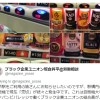 Vending machines in Tokyo Station not getting restocked, exploitative “black company” to blame
Vending machines in Tokyo Station not getting restocked, exploitative “black company” to blame We try out “Chan Ramen”, an underground type of ramen popular in the ramen community
We try out “Chan Ramen”, an underground type of ramen popular in the ramen community Kyoto’s 100 Demons yokai monster parade returns!
Kyoto’s 100 Demons yokai monster parade returns! McDonald’s new Happy Meals offer up cute and practical Sanrio lifestyle goods
McDonald’s new Happy Meals offer up cute and practical Sanrio lifestyle goods Japanese ramen restaurants under pressure from new yen banknotes
Japanese ramen restaurants under pressure from new yen banknotes All-you-can-drink Starbucks and amazing views part of Tokyo’s new 170 meter-high sky lounge
All-you-can-drink Starbucks and amazing views part of Tokyo’s new 170 meter-high sky lounge Studio Ghibli releases new action figures featuring Nausicaä of the Valley of the Wind characters
Studio Ghibli releases new action figures featuring Nausicaä of the Valley of the Wind characters New private rooms on Tokaido Shinkansen change the way we travel from Tokyo to Kyoto
New private rooms on Tokaido Shinkansen change the way we travel from Tokyo to Kyoto Studio Ghibli glasses cases let anime characters keep an eye on your spectacles
Studio Ghibli glasses cases let anime characters keep an eye on your spectacles Tokyo Tsukiji fish market site to be redeveloped with 50,000-seat stadium, hotel, shopping center
Tokyo Tsukiji fish market site to be redeveloped with 50,000-seat stadium, hotel, shopping center Beautiful Ghibli sealing wax kits let you create accessories and elegant letter decorations【Pics】
Beautiful Ghibli sealing wax kits let you create accessories and elegant letter decorations【Pics】 Studio Ghibli releases Kiki’s Delivery Service chocolate cake pouches in Japan
Studio Ghibli releases Kiki’s Delivery Service chocolate cake pouches in Japan New definition of “Japanese whiskey” goes into effect to prevent fakes from fooling overseas buyers
New definition of “Japanese whiskey” goes into effect to prevent fakes from fooling overseas buyers Our Japanese reporter visits Costco in the U.S., finds super American and very Japanese things
Our Japanese reporter visits Costco in the U.S., finds super American and very Japanese things Studio Ghibli unveils Mother’s Day gift set that captures the love in My Neighbour Totoro
Studio Ghibli unveils Mother’s Day gift set that captures the love in My Neighbour Totoro New Japanese KitKat flavour stars Sanrio characters, including Hello Kitty
New Japanese KitKat flavour stars Sanrio characters, including Hello Kitty More foreign tourists than ever before in history visited Japan last month
More foreign tourists than ever before in history visited Japan last month New Pokémon cakes let you eat your way through Pikachu and all the Eevee evolutions
New Pokémon cakes let you eat your way through Pikachu and all the Eevee evolutions Sales of Japan’s most convenient train ticket/shopping payment cards suspended indefinitely
Sales of Japan’s most convenient train ticket/shopping payment cards suspended indefinitely Sold-out Studio Ghibli desktop humidifiers are back so Totoro can help you through the dry season
Sold-out Studio Ghibli desktop humidifiers are back so Totoro can help you through the dry season Japanese government to make first change to romanization spelling rules since the 1950s
Japanese government to make first change to romanization spelling rules since the 1950s Ghibli founders Toshio Suzuki and Hayao Miyazaki contribute to Japanese whisky Totoro label design
Ghibli founders Toshio Suzuki and Hayao Miyazaki contribute to Japanese whisky Totoro label design Doraemon found buried at sea as scene from 1993 anime becomes real life【Photos】
Doraemon found buried at sea as scene from 1993 anime becomes real life【Photos】 Tokyo’s most famous Starbucks is closed
Tokyo’s most famous Starbucks is closed One Piece characters’ nationalities revealed, but fans have mixed opinions
One Piece characters’ nationalities revealed, but fans have mixed opinions We asked a Uniqlo employee what four things we should buy and their suggestions didn’t disappoint
We asked a Uniqlo employee what four things we should buy and their suggestions didn’t disappoint Princesses, fruits, and blacksmiths: Study reveals the 30 most unusual family names in Japan
Princesses, fruits, and blacksmiths: Study reveals the 30 most unusual family names in Japan Japanese ramen cocktail uses tonkotsu pork broth for alcoholic noodle flavour
Japanese ramen cocktail uses tonkotsu pork broth for alcoholic noodle flavour Foreign student’s comment leads to Japan’s favorite tonkotsu ramen being added to school lunch menu
Foreign student’s comment leads to Japan’s favorite tonkotsu ramen being added to school lunch menu Time to drink Ippudo tonkotsu ramen broth from a can, only at Japanese vending machines
Time to drink Ippudo tonkotsu ramen broth from a can, only at Japanese vending machines Ramen vending machine in Tokyo satisfies noodle and gyoza cravings at any time of day or night
Ramen vending machine in Tokyo satisfies noodle and gyoza cravings at any time of day or night Poisonous blowfish ramen restaurant in Tokyo is death-defyingly delicious【Taste test】
Poisonous blowfish ramen restaurant in Tokyo is death-defyingly delicious【Taste test】 Is ramen without the “men” a Tokyo dining paradox worth experiencing?【Taste test】
Is ramen without the “men” a Tokyo dining paradox worth experiencing?【Taste test】 How to make tonkotsu ramen at home 【SoraKitchen】
How to make tonkotsu ramen at home 【SoraKitchen】 Ramen made by a sauna shop opens its doors in Tokyo
Ramen made by a sauna shop opens its doors in Tokyo Tokyo gets its first subway station ramen vending machine
Tokyo gets its first subway station ramen vending machine Instant vs. Restaurant Ramen Project: Ippudo spicy miso tonkotsu battle【Taste test】
Instant vs. Restaurant Ramen Project: Ippudo spicy miso tonkotsu battle【Taste test】 Tonkotsu ramen rice bowl blows our minds, makes us appreciate noodles in a new light
Tonkotsu ramen rice bowl blows our minds, makes us appreciate noodles in a new light “Mud-based Ramen” touted to have thickest broth in all of Japan
“Mud-based Ramen” touted to have thickest broth in all of Japan Noodle-free ramen? Cup Noodle maker ditches the noodles in new ramen broth soups
Noodle-free ramen? Cup Noodle maker ditches the noodles in new ramen broth soups Tokyo Ramen Show seeks to find the country’s best regional noodles
Tokyo Ramen Show seeks to find the country’s best regional noodles It’s OK to eat ramen every day, says Japanese doctor…as long as it’s not one type
It’s OK to eat ramen every day, says Japanese doctor…as long as it’s not one type Tokyo’s new frozen ramen vending machines are brain-breakingly amazing【Taste test】
Tokyo’s new frozen ramen vending machines are brain-breakingly amazing【Taste test】
Leave a Reply